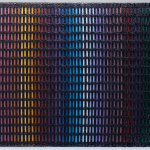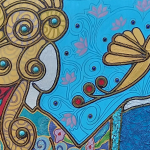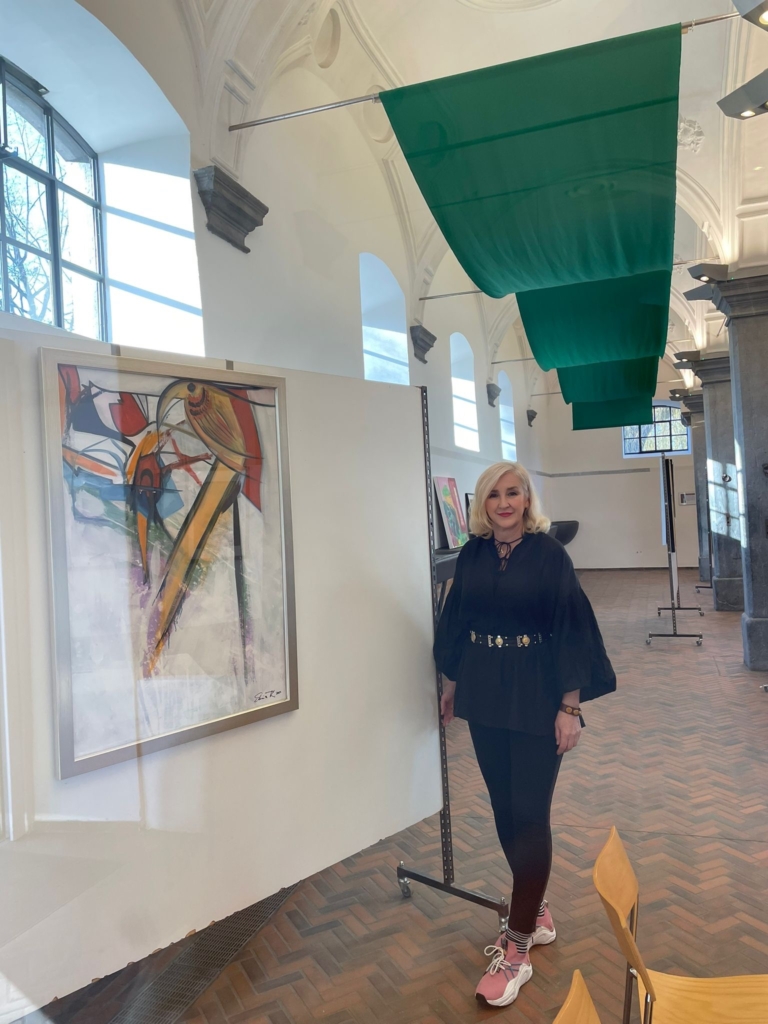
Di origini serbe vive in Germania dal lontano 1992, riuscendo così ad assorbire e a portare con sé entrambe le culture di cui mantiene tutto ciò che è più affine al suo modo di essere e fondendole per dare consistenza alle riflessioni e all’approccio nei confronti della vita; la sua spiccata delicatezza interiore la avvicina al mondo della poesia permettendole di essere conosciuta in tutto il mondo grazie alle numerose raccolte pubblicate in nove lingue. La scrittura dunque sembra essere il suo canale espressivo che la conduce a misurarsi in nuove sfide approdando anche al romanzo perché le parole in fondo sono un’espressione dell’anima che Elvira Kujovic ha bisogno di lasciar fluire; eppure, proprio in virtù della sua natura dinamica ed eclettica, a un certo punto del suo cammino professionale, avverte la necessità di estendere e applicare alla pittura tutta la sua ricca interiorità attraverso lo stile più affine proprio al mondo emozionale, quello nato specificatamente per divenire interprete di quelle pulsioni intime in precedenza escluse dal mondo dell’arte. Dunque l’Espressionismo per la Kujovic si trasforma in mezzo per riflettere, esplorare, approfondire la coscienza e la conoscenza attraverso tutte le sfaccettature con una predilezione a dare spazio all’universo femminile che lei conosce bene, e per cui è abituata ad avere un atteggiamento empatico, comprensivo, perché è l’unico modo per riuscire a interpretare i differenti punti di vista che applica alla pittura come alla poesia. Il cammino verso la conoscenza deve necessariamente indagare sulla natura umana e mettere in evidenza tutto ciò che diversamente resterebbe nascosto, celato dietro le maschere che tutti, in particolar modo le donne, sono costrette a indossare per sopravvivere nella società attuale; dunque la forma a quel punto perde la sua importanza, ciò che conta è la sostanza, quel sentire pulsante che si manifesta in virtù dell’interpretazione di Elvira Kujovic, e che va a raccontare l’istante in cui un’emozione fuoriesce svelando la vera essenza delle sue protagoniste, poiché è esattamente nei frammenti di esistenza, quelle espressioni che sfuggono al controllo della mente, che si libera il non detto. L’apporto materico contribuisce a enfatizzare quelle sensazioni, come se il dettaglio fosse funzionale a mettere in evidenza l’interiorità, come se l’esterno interagisse con l’anima dell’essere umano e ne venisse in qualche modo avvolto armonizzandosi a lei; nella tela Enigma
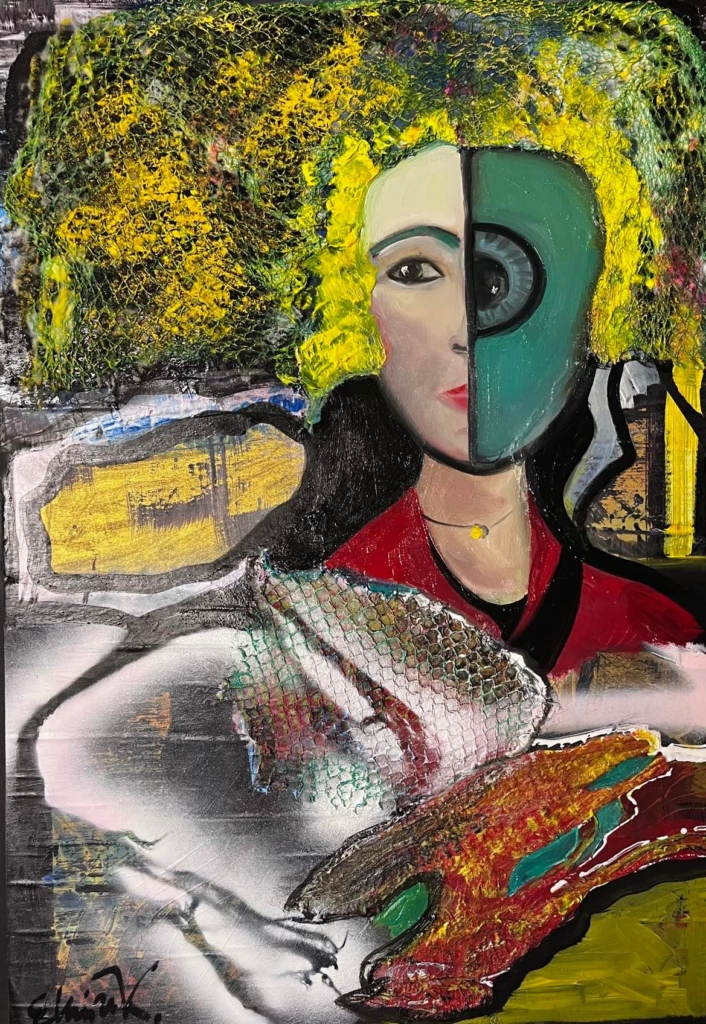
infatti la donna è circondata da una sottile rete che funge da sfondo e che si confonde con esso, come a sottolineare quanto il mistero della vita e dell’inconscio sia spesso rinchiuso all’interno di apparenze, di convenzioni, dettate dalla società e dall’ambiente, che vanno a intrappolare la possibilità dell’individuo di aprirsi a una maggiore conoscenza. Oppure, secondo un altro punto di osservazione, quella rete è la stessa in cui la verità si nasconde per impedire a chiunque di scorgerla, divenendo pertanto una barriera difensiva oltre cui è poi difficile entrare. L’essere umano, e in particolar modo l’universo femminile, è un terreno per lo più inconosciuto poiché le sfaccettature della personalità rendono una conoscenza approfondita sempre sfuggente e cangiante, soprattutto in quella sfera emozionale legata che la Kujovic racconta nel dipinto Woman in love,
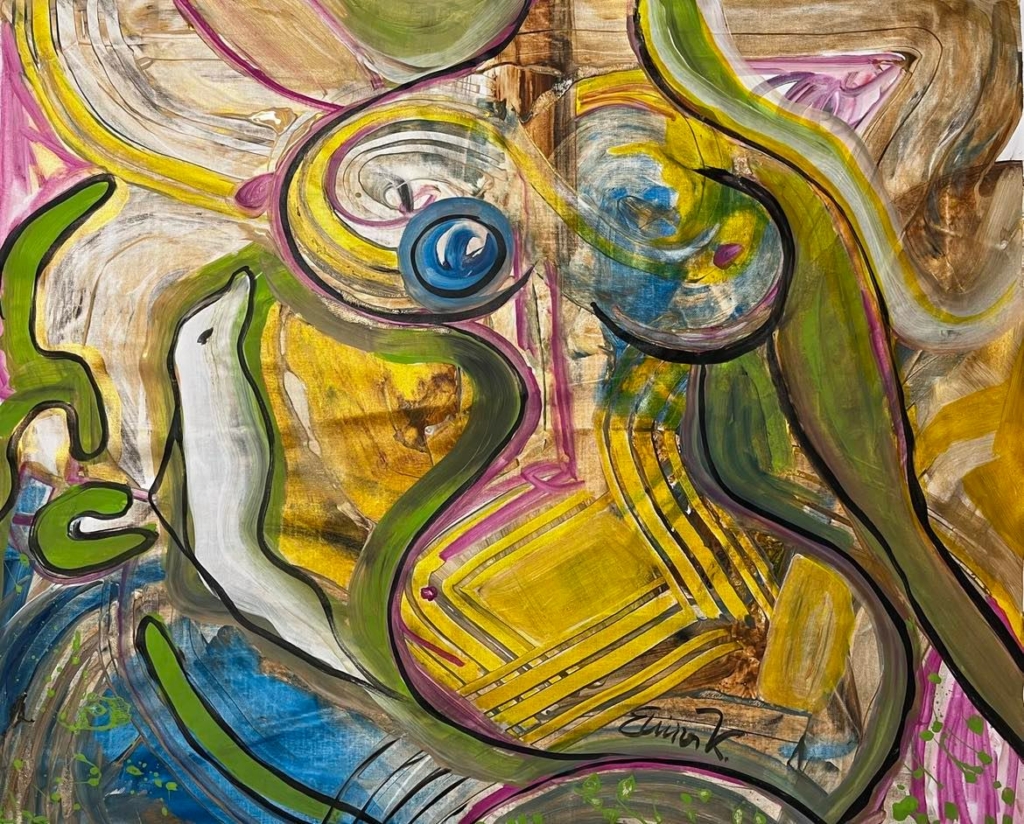
dove il disorientamento e la perdita del contatto con il lato razionale si manifesta attraverso una tendenza all’indefinitezza, all’inconsistenza dei tratti proprio perché il sentimento più alto e nobile non può rientrare all’interno di confini definiti, arriva e travolge tutto al punto di indurre l’individuo in generale, e la donna in particolare, a perdere il senso della realtà. Quest’opera è una celebrazione della capacità femminile di lasciarsi andare alla grandezza di un’emozione intensa in grado di arricchire chi la prova, anche a costo di mettere in discussione a volte se stessa e tutto ciò che ha costruito pur di lasciarsi andare a quel magico sogno. La gamma cromatica è tenue e al tempo stesso positiva, quasi sorridente, proprio per armonizzarsi alle sensazioni provate. Andiamo ora ad approfondire la conoscenza di questa poliedrica artista.
Elvira, quanto è stato importante per il suo percorso creativo, essere divisa tra due culture, quella serba in cui è nata e quella tedesca in cui vive ormai da molti anni? C’è una delle due a cui sente di aver attinto di più l’attitudine scrittoria e una che l’ha influenzata maggiormente a misurarsi con la pittura? In quale momento ha avvertito l’esigenza di misurarsi con l’arte figurativa?
Entrambe le culture mi hanno arricchito. Ne ho beneficiato molto, la mia visione del mondo, la mia comprensione delle persone e delle diverse culture e il mio rapporto con l’arte ne hanno tratto molta linfa. Il background culturale del mio paese d’origine, la situazione economica e sociale della città in cui sono nata e cresciuta, mi hanno sensibilizzato alle circostanze sociali in cui tutti viviamo e hanno avuto una grande influenza sul mio lavoro artistico. In Germania mi sono state date tutte le opportunità e le risorse per svilupparmi come artista. Nella poesia così come nella prosa, il centro del mio interesse è sempre stato l’essere umano. Certo, anche la natura e la sua bellezza, ma senza le persone la bellezza della natura rimarrebbe non riconosciuta e inosservata. Per gli esseri umani, non percepire qualcosa equivale quasi a non esistere. In realtà, ovviamente, non è così, ma noi umani abbiamo bisogno di stimoli audiovisivi e di immagini per capire che qualcosa esiste. Pertanto, per me, l’arte non può esistere senza le persone. L’essere umano è stato e sarà sempre al centro della mia ricerca artistica. L’uomo con tutti i suoi bisogni e la sua magnificenza e tutti i suoi problemi.
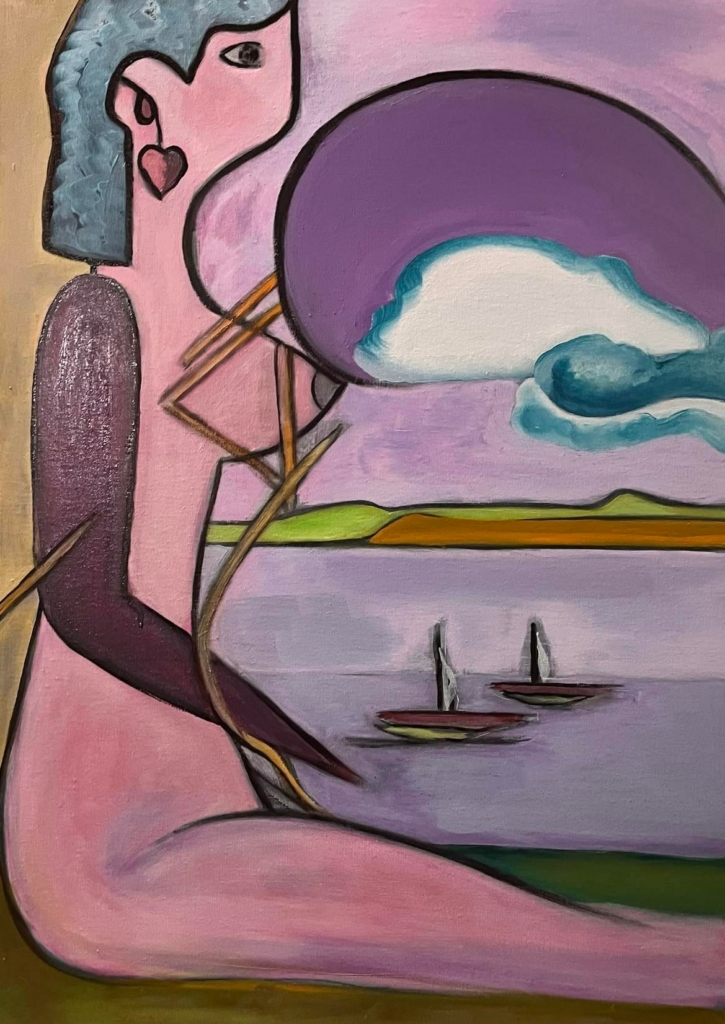
Quale differenza riscontra tra l’approccio scrittorio e quello pittorico? Passa dall’uno all’altro sulla base delle emozioni di cui vuole parlare oppure le due differenti manifestazioni artistiche si completano vicendevolmente?
La scrittura è emozionante quanto la pittura, solo che quando scrivi sei molto concentrato su un sentimento intenso. Un sentimento profondo, intimo, legato al testo che a volte, o anche molto spesso, può essere angosciante per l’artista. Per quanto riguarda la pittura, sono comunque coinvolti i sentimenti però in modo diverso. È un processo di liberazione, libertà assoluta e relax. Quando ti arrendi ai sentimenti, crei immagini oneste che anche lo spettatore può sentire e amare. Questo è esattamente ciò che un artista vuole ottenere. Il sentimento e l’esperienza emotiva soggettivi dovrebbero essere trasferiti all’osservatore che certamente li vive a modo suo, forse completamente diverso dall’artista, eppure li vive molto intensamente. Ed è proprio questo che significa creare arte onesta. La pittura libera e recupera il pittore. La scrittura, invece, è un tipo di lavoro molto intenso e creativo e può essere anche faticoso. Durante la scrittura, qualcosa deve sempre essere corretto, il testo viene letto e modificato ancora e ancora. Chi scrive ha un potenziale inesauribile. Perciò ci si corregge, ci si riduce in modo da poter dire molto con poche parole e suscitare sentimenti profondi nel lettore. Il sentimento è sempre l’elemento più importante in qualsiasi forma d’arte. Di conseguenza guardare le mie opere mi ispira a scrivere e ciò che scrivo mi ispira a dipingere.
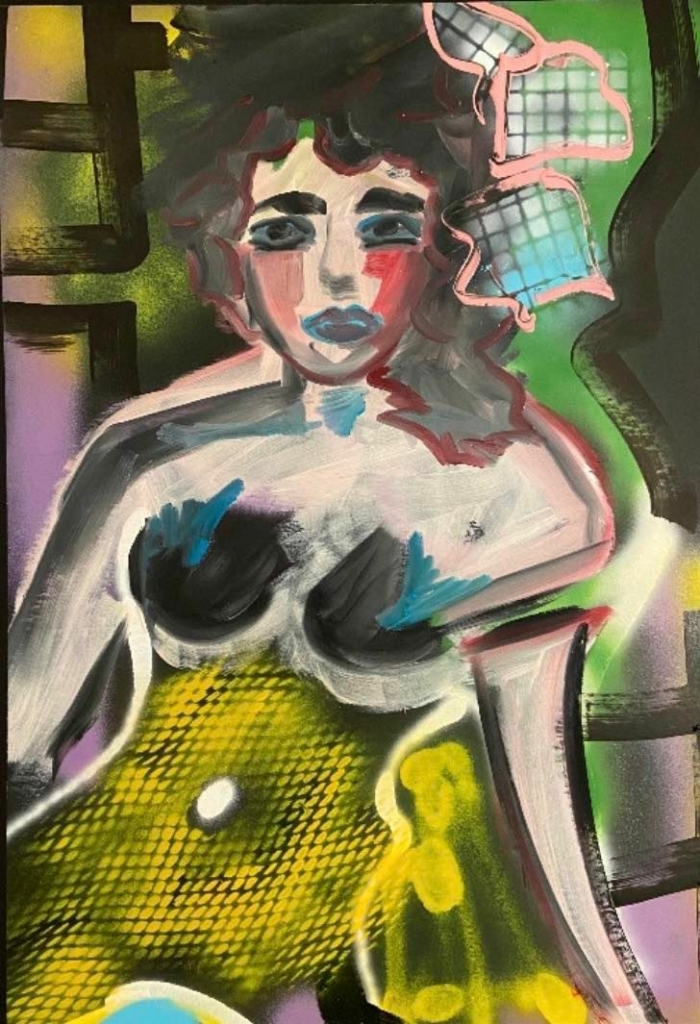
Il suo stile è l’Espressionismo, come mai la scelta di questo tipo di linguaggio artistico? I suoi ultimi lavori si sono focalizzati sulla donna, crede che la figura femminile sia ancora troppo inascoltata malgrado l’avanzamento di una società che si ritiene moderna? Qual è il messaggio che desidera giunga all’osservatore dei suoi dipinti?
Trovo che nell’Espressionismo Astratto risieda la verità. I creatori di opere in questo stile non sono pienamente consapevoli di ciò che stanno facendo e del motivo per cui le immagini sono così come sono. In merito alla figura femminile sì, redo che sia effettivamente ancora troppo inascoltata. E non penso che cambierà molto neanche in futuro. Piuttosto, si tratta della battaglia dei sessi, che lo vogliamo capire o no, è un dato di fatto. Immagina che nel Ventunesimo secolo le donne in Germania guadagnano il diciotto per cento in meno di salario rispetto agli uomini malgrado svolgano le stesse mansioni. Non è forse una prova di maschilismo questa? E sto parlando dell’Europa, penso che tutti sappiano qual è la situazione dell’uguaglianza di genere nei paesi in via di sviluppo. Le donne sono molto più emotive, vulnerabili e dipendenti dagli uomini, soprattutto nel loro ruolo di madri. Solo per questo motivo saranno sempre inferiori agli uomini. Per sfuggire a questa lotta, per sfuggire a questa dipendenza, le donne si sono emancipate e sono diventate lavoratrici, sono più autonome ma così facendo si sono caricate di un ulteriore peso. Fanno il doppio per seguire figli, famiglia e carriera. Le donne sono grandi, sono le madri dell’umanità. Nonostante ciò, non stanno ottenendo il riconoscimento, l’apprezzamento e l’uguaglianza che meritano. Il mio messaggio ai fruitori delle mie opere è di sbarazzarsi di tutti i pregiudizi e guardare le opere con il cuore aperto. Perché ciò che è nascosto agli occhi lo si può vedere con il cuore.
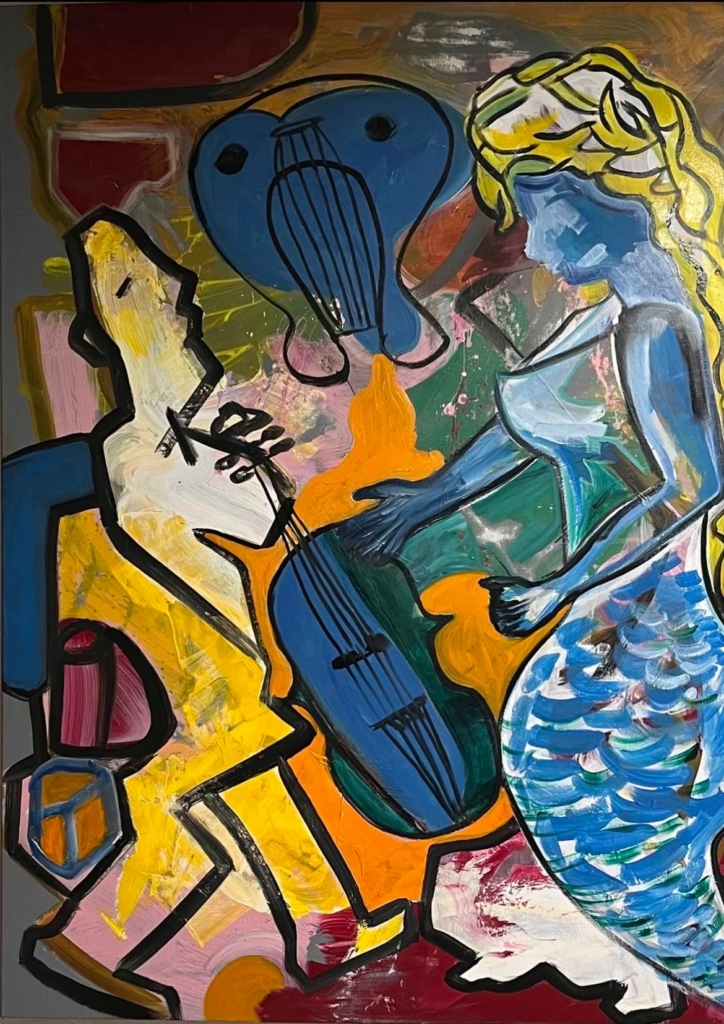
Lei ha al suo attivo otto volumi di poesia e un romanzo, è stata tradotta in molte lingue e ha vinto tre importanti premi letterari; cosa significa per lei esprimersi in versi? Quali difficoltà ha incontrato nel misurarsi con una forma scrittoria, la prosa, diversa dalla poesia di cui è autrice apprezzata a livello mondiale?
Indipendentemente dal paziente ascoltatore con cui si ha una conversazione, non è mai del tutto possibile esprimere pienamente ciò che si sente e si pensa. L’unico modo è scrivere con una penna ciò che ho nel cuore nella solitudine desiderata. Quando ho iniziato a scrivere poesie, non avevo necessariamente bisogno di tempi lunghi, scrivere mi veniva facile. Oggi, dopo molto tempo, ho un’ispirazione e la scrivo ed è fatta. Tre minuti, cinque minuti, dieci minuti o poco più, questo è tutto. Per scrivere testi in prosa, invece, c’è bisogno di molta quiete e isolamento. Durante il processo creativo, in cui centinaia di immagini giocano davanti agli occhi in brevissimo tempo, si svolge una vera battaglia tra l’immaginazione e le capacità di seguire il ritmo e la velocità con la tastiera del laptop per ricordare tutto. Per questo dobbiamo scrivere, appartati e molto tranquilli.
Quali sono i suoi prossimi progetti, sia dal punto di vista letterario che da quello artistico? Dove potranno vedere i lettori le sue opere pittoriche?
Una mostra qui in Germania è prevista per il prossimo futuro. Successivamente esporrò i miei dipinti in Austria a Vienna. Al momento do priorità alla mia pittura ma presto tornerò sicuramente più attiva anche nella scrittura.
ELVIRA KUJOVIC-CONTATTI
Email: elvira.kujovic@outlook.de
Facebook: https://www.facebook.com/elvira.kujovic
Instagram: https://www.instagram.com/elvirakujovic/
Linkedin: https://www.linkedin.com/in/elvira-kujovic-75453716/
Marta Lock’s interviews: Elvira Kujovic, poetic sensitivity meets painting and gives voice to the female world
Of Serbian origin, she has been living in Germany since 1992, thus managing to absorb and bring with her both cultures, of which she retains all that is most akin to her way of being and blends them to give consistency to her reflections and approach to life; her marked inner delicacy brings her closer to the world of poetry, enabling her to be known throughout the world thanks to numerous collections published in nine languages. Writing therefore seems to be her channel of expression that leads her to measure herself against new challenges, even landing on the novel, because words are, after all, an expression of the soul that Elvira Kujovic needs to let flow; and yet, precisely because of her dynamic and eclectic nature, at a certain point in her professional career, she felt the need to extend and apply all her rich interiority to painting through the style most akin to the emotional world, the one born specifically to become the interpreter of those intimate impulses previously excluded from the world of art. Therefore, Expressionism for Kujovic becomes a means to reflect, explore, deepen conscience and knowledge through all its facets with a predilection for giving space to the female universe that she knows well, and for which she is used to having an empathetic, understanding attitude, because it is the only way to succeed in interpreting the different points of view that she applies to painting as to poetry. The path to knowledge must necessarily investigate human nature and highlight everything that would otherwise remain hidden, concealed behind the masks that everyone, especially women, are forced to wear to survive in today’s society; therefore, form loses its importance, what counts is the substance, that pulsating feeling that is manifested by virtue of Elvira Kujovic’s interpretation, and which goes on to recount the instant in which an emotion escapes, revealing the true essence of its protagonists, since it is precisely in the fragments of existence, those expressions that escape the control of the mind, that the unspoken is released. The material contribution contributes to emphasising those sensations, as if the detail were functional in highlighting interiority, as if the exterior interacted with the soul of the human being and was somehow enveloped by it, harmonising with her; in the canvas Enigma, in fact, the woman is surrounded by a thin net that acts as a background and blends in with it, as if to emphasise how much the mystery of life and the unconscious is often enclosed within appearances, conventions, dictated by society and the environment, which trap the individual’s possibility of opening up to greater knowledge. Or, according to another point of view, that net is the same one in which truth is hidden to prevent anyone from seeing it, thus becoming a defensive barrier beyond which it is then difficult to enter. The human being, and particularly the female universe, is a largely unknown terrain, as the facets of personality make in-depth knowledge always elusive and iridescent, especially in that emotionally bound sphere that Kujovic recounts in Woman in love, where the disorientation and loss of contact with the rational side is manifested through a tendency to indefiniteness, to the inconsistency of features precisely because the highest and noblest feeling cannot fit within defined boundaries, it arrives and overwhelms everything to the point of inducing the individual in general, and the woman in particular, to lose all sense of reality. This artwork is a celebration of a woman’s ability to let herself go to the greatness of an intense emotion capable of enriching those who experience it, even at the cost of sometimes questioning herself and everything she has built up in order to let herself go to that magical dream. The chromatic range is soft and at the same time positive, almost smiling, precisely to harmonise with the sensations felt. Let us now get to know this multifaceted artist better.
Elvira, how important has it been for your creative journey to be torn between two cultures, the Serbian one in which you were born and the German one in which you have lived for many years now? Is there one of the two from which you feel you have drawn more in your writing attitude and one that has influenced you more to measure yourself against painting? At what point did you feel the need to enter the world of figurative art?
Both cultures have enriched me. I have benefited a lot from them, my world view, my understanding of people and different cultures and my relationship with art has profited a lot. The cultural background of my home country, the economic and social situation of the city where I was born and grew up, made me aware of the social circumstances in which we all live and had a great influence on my artistic work. In Germany, I was given all the opportunities and resources to develop as an artist. In poetry as well as in prose, the centre of my interest has always been the human being. Of course, also nature and its beauty, but without people, the beauty of nature would remain unrecognised and unnoticed. For human beings, not perceiving something is almost equivalent to not existing. In reality, of course, this is not the case, but we humans need audio-visual stimuli and images to realise that something exists. Therefore, for me, art cannot exist without people. The human being has been and will always be at the centre of my artistic research. Man with all his needs and magnificence and all his problems.
What difference do you find between the writing approach and the painting one? Do you switch from one to the other based on the emotions you want to talk about or do the two different artistic manifestations complement each other?
Writing is as exciting as painting, only when you write you are very focused on an intense feeling. A deep, intimate, text-related feeling that can sometimes, or even very often, be distressing for the artist. As for painting, feelings are still involved, but in a different way. It is a process of liberation, absolute freedom and relaxation. When you surrender to feelings, you create honest images that the viewer can also feel and love. This is exactly what an artist wants to achieve. The subjective feeling and emotional experience should be transferred to the viewer who certainly experiences them in his own way, perhaps completely different from the artist, yet experiences them very intensely. And that is precisely what it means to create honest art. Painting liberates and reclaims the painter. Writing, on the other hand, is a very intense and creative type of work and can also be tiring. When writing, something always has to be corrected, the text is read and edited again and again. The writer has inexhaustible potential. Therefore, you corrects yourself, you reduces yourself so that you can say a lot in a few words and arouse deep feelings in the reader. Feeling is always the most important element in any art form. Consequently, looking at my paintings inspires me to write and what I write inspires me to paint.
Your style is Expressionism, why the choice of this type of artistic language? Your latest artworks have focused on women, do you believe that the female figure is still too unheard of despite the advancement of a society that considers itself modern? What is the message you wish to convey to the viewer of your paintings?
I think that in Abstract Expressionism there is the truth. The creators of artworks in this style are not fully aware of what they are doing and why the images are the way they are. Regarding the female figure, yes, I think it is indeed still too unheard of. And I don’t think it will change much in the future either. Rather, it is about the battle of the sexes, whether we want to understand it or not, it is a fact. Imagine that in the 21st century, women in Germany earn eighteen per cent less in wages than men despite performing the same tasks. Is this not evidence of machismo? And I’m talking about Europe, I think everyone knows what the gender equality situation is in developing countries. Women are much more emotional, vulnerable and dependent on men, especially in their role as mothers. For this reason alone, they will always be inferior to men. To escape this struggle, to escape this dependency, women have emancipated themselves and become workers, they are more autonomous, but in doing so they have burdened themselves with an additional burden. They do twice as much to follow children, family and career. Women are great, they are the mothers of humanity. Despite this, they are not getting the recognition, appreciation and equality they deserve. My message to the viewers of my paintings is to get rid of all prejudices and look at the works with an open heart. For what is hidden from the eyes can be seen with the heart.
You have eight volumes of poetry and one novel to your credit, you have been translated into many languages and won three major literary prizes; what does it mean to you to express yourself in verse? What difficulties have you encountered in dealing with a writing form, prose, that is different from poetry of which you are a world-renowned author?
Regardless of the patient listener with whom one has a conversation, it is never quite possible to fully express what one feels and thinks. The only way is to write with a pen what is in my heart in the desired solitude. When I started writing poetry, I did not necessarily need a long time, writing came easy to me. Today, after a long time, I have an inspiration and I write it and it is done. Three minutes, five minutes, ten minutes or so, that’s it. To write prose texts, on the other hand, you need a lot of quiet and isolation. During the creative process, in which hundreds of images play before the eyes in a very short time, there is a real battle between the imagination and the ability to follow the rhythm and speed with the laptop keyboard to remember everything. That is why we have to write, secluded and very quiet.
What are your next projects, both from a literary and an artistic point of view? Where will readers be able to see your paintings?
An exhibition here in Germany is planned for the near future. Afterwards I will exhibit my paintings in Vienna, Austria. At the moment I am giving priority to my painting, but soon I will definitely become more active in writing as well.

